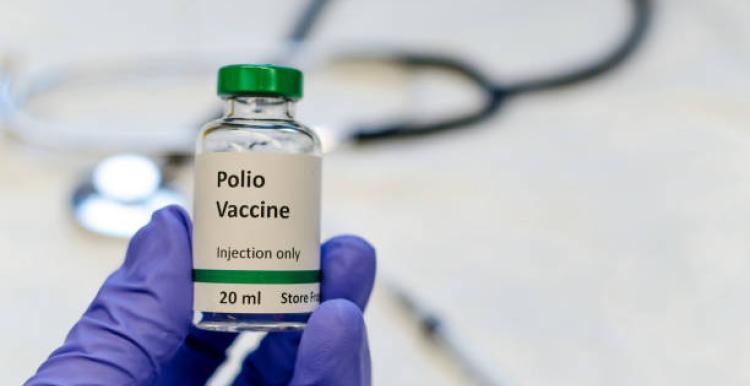Polio: What is it and who is eligible for the vaccine?

What is Polio?
Poliomyelitis (polio) is an infectious disease caused by a virus that attacks the nervous system, that can potentially lead to permanent paralysis.
Children under the age of 5 years old are at high risk but any person can contact polio if they are unvaccinated.
Since February 2022 traces of type 2 poliovirus have been detected in sewage samples in North and East London. The government has announced a vaccine roll out for children 1 to 9 years old in London within the next 6 weeks.
How can it spread?
Polio is very contagious and can spread easily by person-to-person or living in unsanitary conditions exposed to polio.
Through person to person:
- Touching or inhaling feces (poo) of an infected person
- Physical contact with an infected person who did not wash their hands properly
- Inhaling droplets of a sneeze or cough of an infected person
Through item to person:
- Consuming food or water contaminated with polio
- Touching items contaminated with polio
Symptoms
The symptoms of the virus can appear up to 2 weeks after a person gets infected.
Beginning signs of the illness:
- fever
- headache
- tiredness
- sore throat
- muscle aches
- stiff neck
- tummy (abdominal) pain
- vomiting
- feeling and being sick
There is a likelihood that polio infection can cause paralysis of the body, which can develop over hours or days.
The paralysis of the muscle is life threatening as it can cause breathing difficulties, risking the death of asphyxiation (body deprived of oxygen).
If treated urgently, most patients can recover and gain movement in few weeks. However depending on the severity of the infection, some people can be left with a permanent disability.
Call 999 or go to A&E
If you or your child experience the following symptoms:
- difficulty breathing
- numbness of limbs (lack of feeling)
- weakness of limbs (flaccid or floppy)
- stiffness of body (difficulty moving)
Vaccination to protect against polio
Children aged 1 to 9 years old in London are being offered a dose of polio vaccine. For some children this may be an extra dose on top of their routine vaccinations. In other children it may bring them up to date with their routine vaccinations.
The vaccine you are offered will be the right one for the age of your child:
Children age 1 to less than 3 years and 4 months
- 3 doses of polio vaccine
- single polio booster vaccine (Infanrix hexa or Vaxelis). At least 4 weeks after their last dose.
Children age 3 years 4 months to 9 years
- 4 doses of polio vaccine
- single polio booster vaccine (Boostrix-IPV or Revaxis) unless they had received their pre-school booster in the past 12 months.
The NHS will contact you to ask you to book an appointment for your child’s polio vaccine.
I’m a clinically vulnerable/elderly adult – what’s my risk? Why am I not being offered an extra booster?
The risk to the population is extremely low as the majority of the UK population has already been immunised against polio.
If you are up to date with your routine immunisations, you will be protected against polio and your risk of getting ill from polio will be low. The reason children are being offered a booster dose in London is because this is where poliovirus has been detected and between ages 1-9, they have not received their full course of polio vaccinations and so are only partially protected.
Those who cannot have the vaccine:
If you or your child had a serious allergic reaction to a previous vaccination or to certain uncommon antibiotics (neomycin, polymyxin or streptomycin) you may want to check with your doctor.
If you or any vulnerable adult are not up to date with your routine immunisations you can check with your GP and book for a vaccination.
Further information and guidance about polio
For more information about polio or find the support you need, you can do so by accessing the resources below:
Newham Public Health
https://www.newham.gov.uk/health-adult-social-care/polio-virus
NHS
https://www.nhs.uk/conditions/polio/
UK Government
https://www.healthpublications.gov.uk/ArticleOverview.html?sp=Sall
World Health Organisation (WHO)
https://www.who.int/news-room/fact-sheets/detail/poliomyelitis

